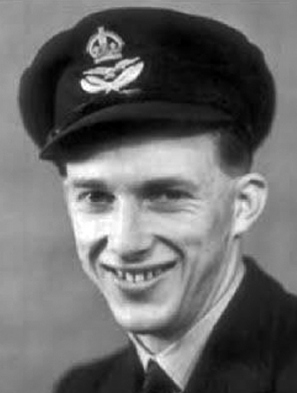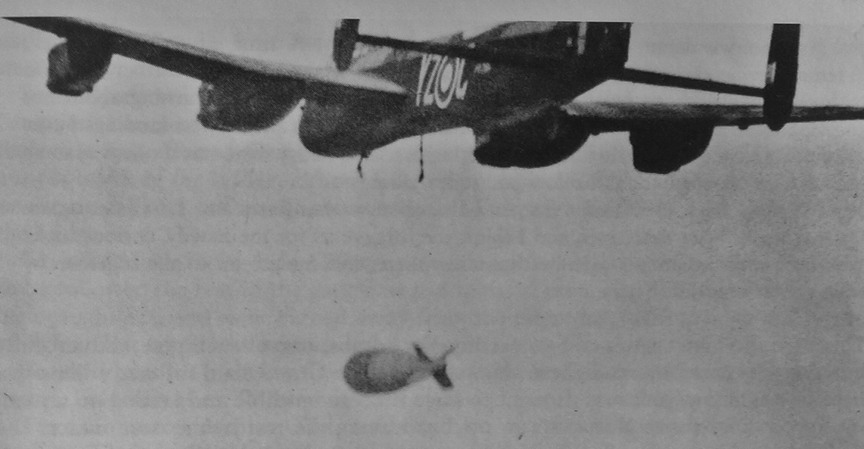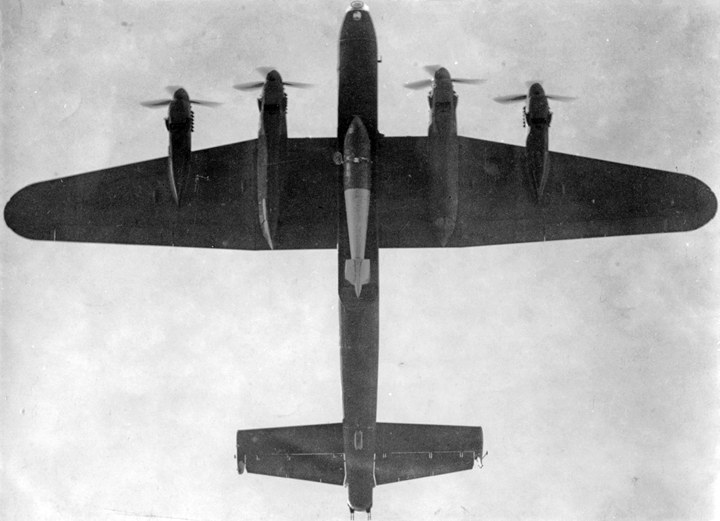 Aircrew Chronicles
Aircrew Chronicles  |
Aircrew Losses
|
Nose Art
|
BCATP
|
Lancaster
|
Media
|
Aircrew Losses
|
Nose Art
|
BCATP
|
Lancaster
|
Media
 Aircrew Chronicles
Aircrew Chronicles  |
Aircrew Losses
|
Nose Art
|
BCATP
|
Lancaster
|
Media
|
Aircrew Losses
|
Nose Art
|
BCATP
|
Lancaster
|
Media
Bomber Command Aircrew Chronicles
Johnny would have to wait until 19 March to drop his first Grand Slam. This attack focused on another viaduct structure, this one crossing the Ruhr River at Arnsberg, twenty-five miles east of Dortmund. Nineteen 617 Squadron Lancasters took part, six of them carrying Grand Slams and the remainder Tallboys. This time 'J for Johnny' was ready to go.
F/O Phil Martin, a Royal Australian Air Force pilot who was being briefed to go on the Arnsberg raid, described his introduction to carrying the Grand Slam, "'Remember,' said the Groupie (Johnny), 'If you bring the bomb back, you can't drop the aircraft more than six inches onto the runway. If you do, the tyres will burst.' If anyone among us sitting in that Nissen hut had had a pin and dropped it, it would have sounded like an unexploded Tallboy hitting a steel floor. "Fauquier went on with his briefing. His previous comment was just one in a string of pearls of wisdom we mentally fingered as we came out of the briefing room, knowing we were to fly the op to obliterate the Arnsberg Viaduct with one of the biggest'bombs ever made, the awesome Grand Slam." F/O Martin described the flight to the target, "We managed to coax this flying bomb up to about 12,700 feet. And there she stayed, governed by the law of gravity and that damn great bomb hanging under there like an overgrown pilot fish under a whale's belly. We began attracting predictor-guided flak as the viaduct neared, and the bomb aimer set up his SABS sight. "The flak was a serious concern as during the final run to the target, the Lancaster had to be flown at a constant and precise course, speed, and altitude for five minutes making it a perfect target for radar-controlled anti-aircraft guns." |
 |
Martin braced himself for what was to come, "I had dropped Tallboys and knew what the upward spring was on release. But this Grand Slam was a beauty. I heard the release unit 'fire' with its usual sharp retort, and the slam of those great arms (the straps that had been holding the bomb in the bomb-bay) hitting the fuselage as they came free. That Grand Slam, spinning impeccably, went down. And we went UP. Lord how we ascended. Most of us made it six hundred feet upwards, the Lancaster's wings flexing and re-flexing like an overstrung bow and we were the human arrow.

"As it struck the viaduct, a magnificent pattern of concentric shockwave circles was shuddering out, the apex being where the viaduct had once arched. Tallboys were already slamming into the circles, creating cross-circle patterns. An immense feeling of lightness and power flowed through the stick as the Lancaster drew breath, delivered of its mammoth babe. The aircraft felt light, responsive, full of bellowing power -in fact, like a Lancaster again."
